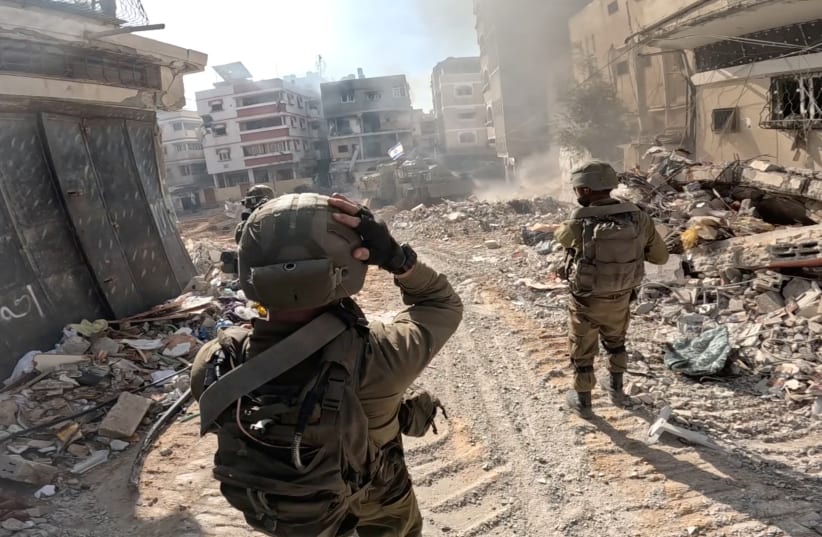The first identified abductee by the IDF forces was Yotam Haim, likely recognized by his distinctive tattoos. Following their identification, the three were immediately examined in Israel, and news of this tragic event quickly surfaced.
The IDF clarified the battlefield's challenging and dense nature, highlighting ongoing extensive investigations and scans to locate the place where the abductees were held.
For reasons not fully clear, the IDF initially focused its efforts against Shejaia, one of the strongest Hamas battalions, known for its role in the October 7 massacre in the kibbutzim.
This approach contrasted the strategy employed during Operation Swords of Iron, where the Golani Brigade launched an immediate ground assault against this battalion, resulting in the loss of seven Golani fighters and the abduction of soldier Oron Shaul.
In the current operation, the maneuver into Shuja'iyya involved a 12-day rolling barrage of fire, followed by air and ground attacks aimed at dismantling two decades' worth of terror infrastructure.
The operation included extensive use of engineering equipment for clearing mines and explosive devices, as well as demolishing buildings posing threats to the forces. This was succeeded by Merkava tanks and Namer armored personnel carriers, with artillerymen conducting direct fire on terrorist homes.
Operational challenges of urban warfare
The initial phase of the combat was particularly challenging, with terrorists retreating and fortifying themselves in the dense neighborhoods. Nearly every third house was fortified with observation posts, sniper positions, mortar launchers, anti-tank missiles, command centers, and arms caches, all underpinned by a network of underground tunnels.
By Thursday of this week, the IDF had anticipated only a few more days of combat in the area. However, intense gun battles are still ongoing. The focus of the combat has been in the densely populated areas of the battalion, such as Kasbah, based on extensive intelligence from Military Intelligence and Shin Bet, targeting suspected buildings, pits, tunnels, and military sites.
Field commanders repeatedly emphasize, "Our collective dream is to find and safely return the abductees to Israel." This aspiration was marred by the tragic incident yesterday, where three abductees were mistakenly identified as terrorists and fatally shot, leading to significant frustration within the IDF.
The incident occurred around 10 am when IDF forces spotted three suspicious figures running towards them. After mistakenly identifying them as terrorists, the soldiers opened fire, resulting in their deaths. Subsequent scans raised suspicions that one of the deceased was Israeli.
Yotam Chaim was identified first, likely due to his tattoos. This led to a thorough investigation, during which all three bodies were examined in Israel, eventually identifying the other two abductees, Samar Fouad Talalka and Alon Shamriz.
The information was rapidly conveyed to the brigade commander and the Southern Command leader, who ordered an in-depth investigation to understand the incident's circumstances amidst recent frequent encounters in the area. The goal is to learn and adapt for future combat, aiming to prevent similar occurrences despite the complexity of urban warfare.
Currently, the IDF is trying to ascertain whether the three abductees managed to escape their captors during a moment of vulnerability, or if the terrorists were defending the site and were subsequently killed by IDF fire.
Security sources stressed that following the severe incident, the IDF initiated extensive searches to determine the location where the three were held. The aim is to extract vital details to shed light on the events, understand the captivity circumstances, and ascertain if there were other abductees.
IDF sources explained that the tragic event caused 'great frustration' among the forces, who are tirelessly working to locate the abductees despite ongoing risks, including to the lives of soldiers.
It was also noted that the incident, which concluded with the mistaken identification and subsequent death of the three abductees while fleeing their captors, likely attempted to reach a safe area and then the Israeli border.
Another military source highlighted the intensive intelligence collection following the abductees' location and status, involving input from the Shin Bet, Mossad, and Military Intelligence Directorate.
Retired Major General Nitzan Alon is leading the “brain war” against time and Hamas, spearheading special operations across the entire Gaza Strip to unravel the mystery surrounding the abductees’ whereabouts and fate.

